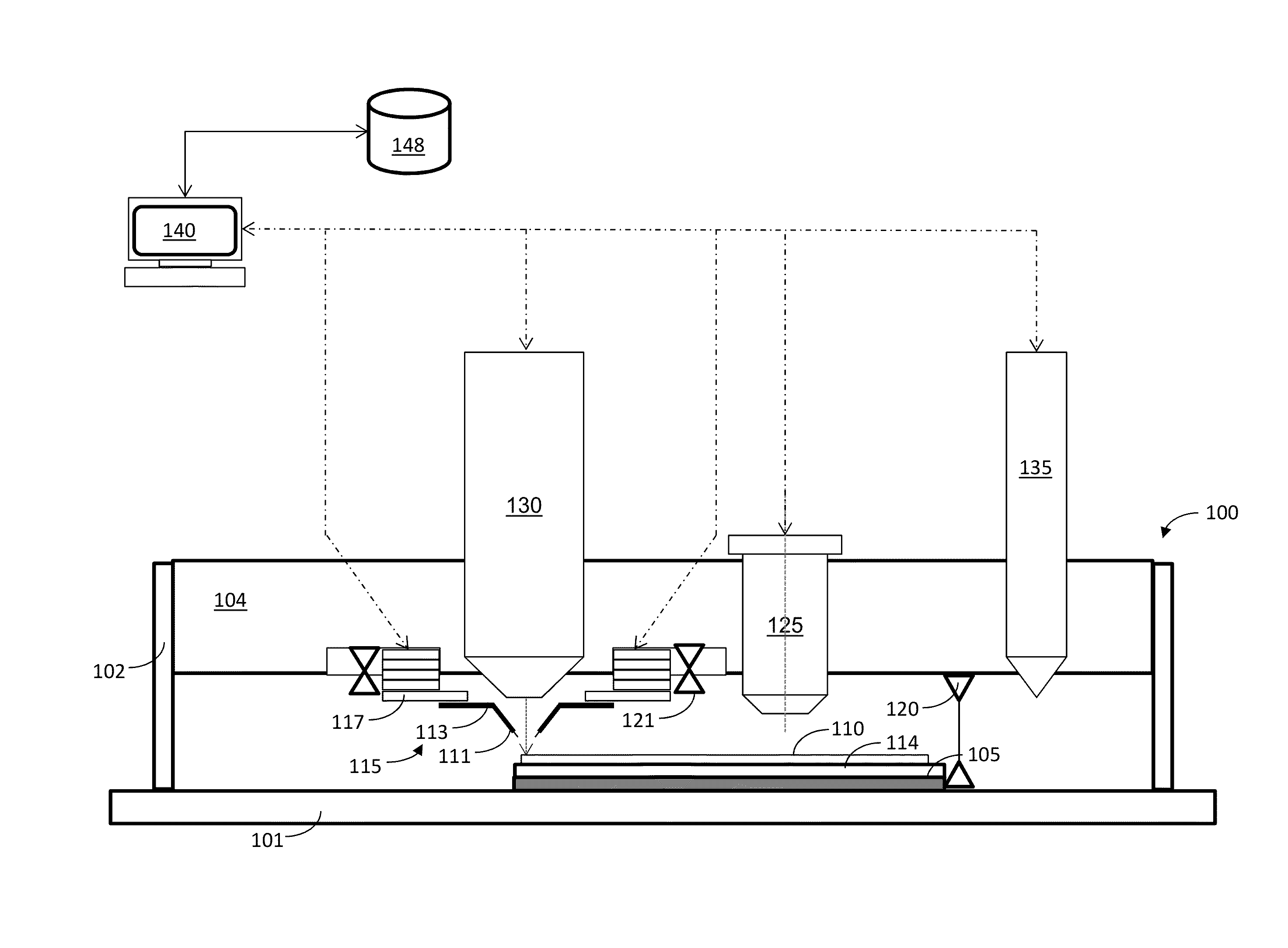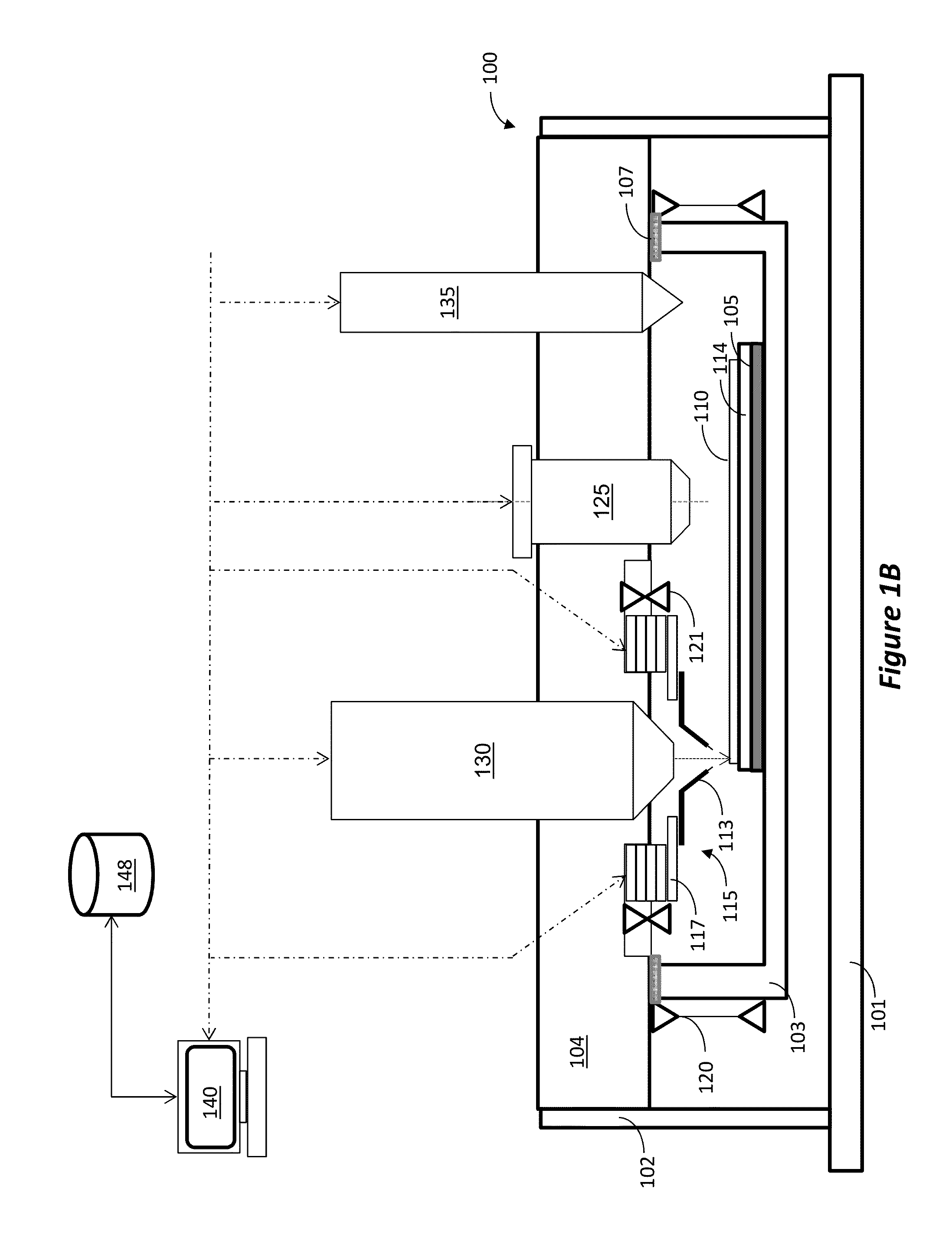Through process flow intra-chip and inter-chip electrical analysis and process control using in-line nanoprobing
a technology of electrical analysis and process control, applied in the field of semiconductor manufacturing, to achieve the effect of fast, accurate and fully automated navigation on the wafer
- Summary
- Abstract
- Description
- Claims
- Application Information
AI Technical Summary
Benefits of technology
Problems solved by technology
Method used
Image
Examples
Embodiment Construction
[0066]FIGS. 1A-1C illustrate various embodiments for the integration of in-line wafer level nanoprobe 115 with a wafer level SEM 130. The SEM can be used for standard SEM imaging of the region of interest (ROI) and for navigation and landing of the nanoprobes 115, including, in some embodiments, real time feedback for navigation and landing assistance. The nanoprobes may be used to perform parametric testing and characterization of the devices (e.g., transistors) within the ROI. Additionally, the SEM can be used to image the ROI while the nanoprobes are operated to perform the testing. For example, the nanoprobes may be used to drive current into the devices in the ROI, thereby changing the potential in certain areas of the ROI. The change in potential will cause a change in the SEM image. Similarly, certain shorts or resistance areas will cause a localized increase in temperature, which may also be visible in an SEM image. However, to achieve these objectives, the nanoprobes should...
PUM
 Login to View More
Login to View More Abstract
Description
Claims
Application Information
 Login to View More
Login to View More - R&D
- Intellectual Property
- Life Sciences
- Materials
- Tech Scout
- Unparalleled Data Quality
- Higher Quality Content
- 60% Fewer Hallucinations
Browse by: Latest US Patents, China's latest patents, Technical Efficacy Thesaurus, Application Domain, Technology Topic, Popular Technical Reports.
© 2025 PatSnap. All rights reserved.Legal|Privacy policy|Modern Slavery Act Transparency Statement|Sitemap|About US| Contact US: help@patsnap.com



